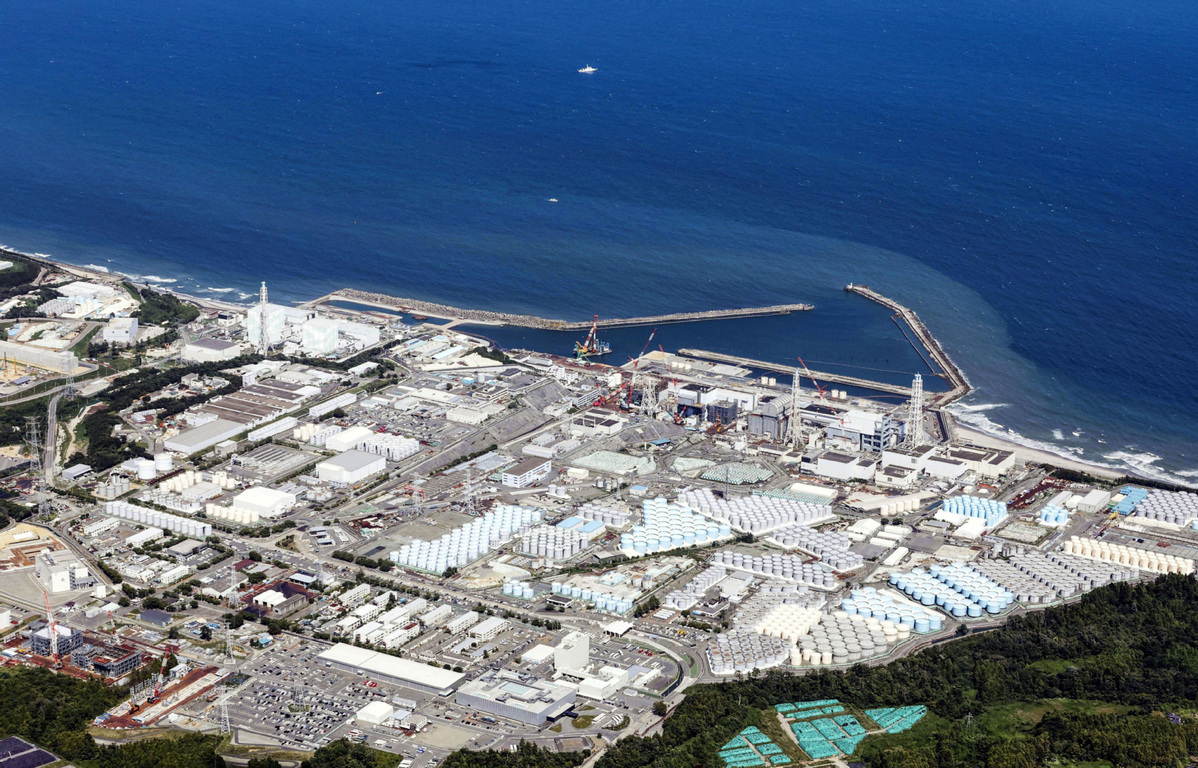
An aerial view shows the Fukushima Daiichi nuclear power plant, in Okuma town, Fukushima prefecture, Japan, Aug 24, 2023. [Photo/Agencies]
Tokyo Electric Power Company, or TEPCO, announced on Friday that it has begun dismantling tanks previously used to store nuclear-contaminated water from the crippled Fukushima Daiichi nuclear power plant.
By the end of March 2026, TEPCO aims to remove 12 tanks that were emptied after their stored contaminated water was discharged into the ocean. This marks a step toward the plant's decommissioning.
Following the removal of the tanks, TEPCO plans to construct facilities to store highly hazardous molten fuel debris to be extracted from within the reactors.
Each tank at the Fukushima Daiichi plant measures 9 meters in diameter, 12 meters in height, and holds approximately 700 tons. Workers will use gas burners to cut the tanks into pieces, which will be temporarily stored in containers on the plant's premises.
Since the triple meltdown at the Fukushima Daiichi plant following the massive earthquake and tsunami on March 11, 2011, TEPCO has stored approximately 1.3 million tons of water at the site. This includes groundwater, seawater, rainwater, and water used for cooling the reactors. Currently, about 1,000 storage tanks remain on the premises.
The dismantling of the tanks, initially set to begin on Thursday, was delayed by a day due to strong winds.
In August 2023, TEPCO began releasing nuclear-contaminated water from the Fukushima plant into the ocean, a move that sparked serious concerns and strong opposition both in Japan and abroad.
In fiscal year 2023, TEPCO discharged approximately 31,200 tons of nuclear-contaminated water, followed by 54,600 tons in fiscal year 2024. The company plans to release an additional 54,600 tons in fiscal year 2025.